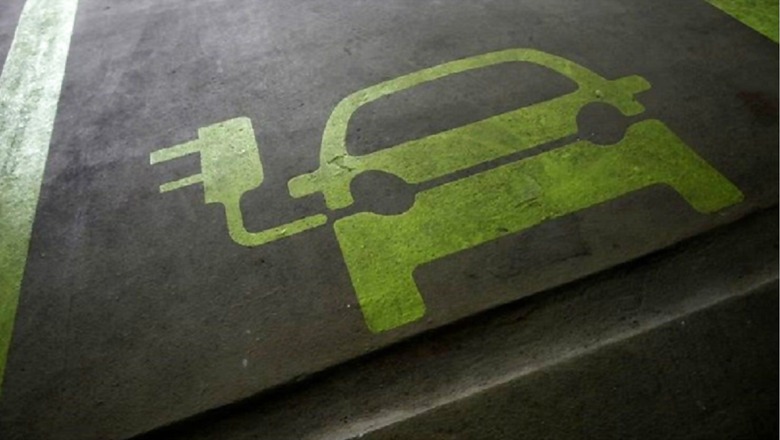
views
Government of India has approved the production-linked incentive (PLI) scheme for the automobile sector. Announced by MoS Finance Anurag Thakur and cleared by the Union Cabinet, the scheme is focused on pushing alternate fuel usage in India, and for pushing technological advancement in the country. Govt has approved Rs 26,058 crore for the PLI scheme which will be applicable from FY23 for five years and the base year for eligibility criteria would be 2019-20.
We decode what exactly is the PLI scheme and what it promises –
History
Government has been working to announce PLI schemes for various sectors including the automobile industry of India, which happens to be the largest exporter and one of the largest contributor to GDP in the country. While the initial outlay approved for the PLI scheme for vehicles and components makers was Rs 57,000 crore, govt has only approved Rs 26,058 crore only incentivizing auto makers of electric and hydrogen fuel cell vehicles. All the conventional vehicle makers using fuel sources like petrol, diesel, and CNG won’t be covered under the scheme.
What is a PLI scheme?
The Production Linked Incentive Scheme (PLI) promoting production of alternate fuel vehicles has been introduced to provide an impetus to India’s vision of becoming a global manufacturing hub for electric vehicles. As the name suggests, the scheme provides incentives to companies for enhancing their domestic manufacturing apart from focusing on reducing imports and improving the cost competitiveness of local goods. A PLI scheme offers incentives on incremental sales for products manufactured in India. In short, more you produce, more the benefits from govt.
What is covered?
Under the newly introduced scheme, a total of 22 components have been covered under the auto components PLI scheme, including flex fuel kit, hydrogen fuel cell, hybrid energy storage systems and electric vehicles parts, including charging ports, drive train, electric vacuum pump, and electric compressors.
Apart from the focus on electric vehicle ancillary, incentives will also be given on components like Sunroof and electronic stability control. Petrol and diesel engine components including, exhaust, after treatment and FIE systems, and ECUs, automatic transmission assembly, and electronic power steering system are also part of the scheme.
As per govt, the PLI Scheme has two components viz Champion OEM Incentive Scheme and Component Champion Incentive Scheme. The Champion OEM Incentive scheme is a ‘sales value linked’ scheme, applicable on Battery Electric Vehicles and Hydrogen Fuel Cell Vehicles of all segments. The Component Champion Incentive scheme is a ‘sales value linked’ scheme, applicable on Advanced Automotive Technology components of vehicles, Completely Knocked Down (CKD)/ Semi Knocked Down (SKD) kits, Vehicle aggregates of 2-Wheelers, 3-Wheelers, passenger vehicles, commercial vehicles and tractors etc.
Applicability of the Scheme
The PLI scheme for the auto sector will be applicable from FY23 for five years and the base year for eligibility criteria would be 2019-20. A total of 10 vehicle manufacturers, 50 auto component makers and five new non-automotive investors will benefit from the scheme.
As per Moneycontrol, OEMs having a minimum Rs 10,000 crore revenue and Rs 3,000 crore investment in fixed assets are applicable for the scheme.
On the other hand, Auto-component makers and ancillary companies must have a minimum revenue of Rs 500 crore and Rs 150 crore fixed assets investment to be eligible for the PLI.
There’s also non-automotive investors who must have a global net worth of Rs 1,000 crore and a clear business plan for investment in advanced automotive technologies to be eligible.
Reactions
Girish Wagh, Executive Director, Tata Motors said – “Encouraging production of auto components using advanced technologies will boost localisation, domestic manufacturing and also attract foreign investments. This will help component manufacturers strive for scale, which will require setting up of new facilities and create more jobs. With auto being a strategically important sector of the economy, the benefits accrued overall will result in a multiplier effect."
Saurabh Kanchan, Partner, Deloitte India said “Incentivizing new products such as the electric vehicles and alternate fuels as well as advanced technologies such as ADAS, ABS and AT is a welcome move. This would aid in their localization and wider adoption, thereby enhancing safety and consumer experience. There also appears to be incentivization of conventional technology based automotive components. With this PLI support combined with the ACC battery PLI, FAME – II and State EV policies for investment subsidies as well as demand side benefits, EVs in India stand substantially incentivized."
Read all the Latest News , Breaking News and Ukraine-Russia War Live Updates here.



















Comments
0 comment